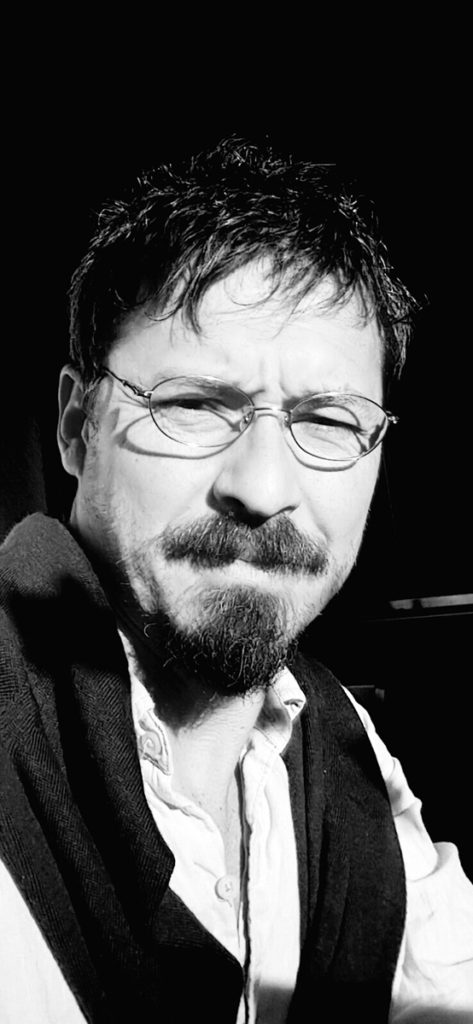
Alex Morales seems to have explored all of the roads of visual arts with a kindled enthusiasm and a tenacious will, guided by the spirit of the wayfarer who cannot be stopped by the road’s length or by its twists and turns. To him art is the road itself. And his steps mark, at the same time, a destination and a journey.
From the delicate paintbrush to the rugged tools used to work on the hardest materials, he dives into the adventure of making this world a more livable place, populated by people as well as by the forms and colors of art.
For this venture he has taken over, with unparalleled skill, of almost all of the elements offered by his surround, of many of the accessible supports where an artistic symbol may be erected or stamped. Nothing is elusive or untameable enough to escape the artist’s intent; everything may be subjected to his hands and to his transforming and imaginative sensibility. The canvas or the rustic truss, plain wood or a voluminous log opposing resistance to the sculpting arm, the soft leaf, the broad and straight or curved wall, any material gives in to the motion of the creator.
Moved by the early conviction of an artistic fate, Morales has not only crossed geographic and cultural barriers, he also crosses, with remarkable versatility, traditional as well as diffuse frontiers of the plastic genres. And he does so in the manner of a busy worker or a carefree demiurge, as if he knew beforehand that the results will always be auspicious and will never escape his full control. In this manner, acrylic paint cohabitates with watercolor, ink, pastels and pencil, in a happy and even festive communion; but the diversity of the techniques is neither accidental nor careless, but in harmony with the different motives addressed and brought to life by these technical procedures. Most of the times the color is generous, opulent, unprejudiced, and when the artist uses a different code it toggles with the sobriety of details that are either imposed by the technique or deliberately sought.
Thus appear, thanks to the conjunction of what revolves above and what holds below, series of pictures, murals, sculptures or handcrafts of multiple dimensions and locations, enriching even more the diversity of a proposal already diverse.
If the artist is a seeker, then Morales takes far this feverish search, splitting in many directions without this multiplication ever becoming a threat to his view of the ensemble. His works depict mundane and human themes entrenched in the small-town plot where life seems to move slower, and the memories of which never leave the artist; but the great city is also present in his essential and recognizable strokes, the cosmopolitan lifestyle of the Big Apple showing its slender contour or the urban corners where, as a result of the thematic framework, his current living environment mixes up with the long-lasting memories of his place of origin.
These themes may be still nature, classic but also peppy, the landscaped glimpsed through the arbor, luminous faces crossed by a blast of warmth or longing or almost ghostly figures that cover mysteries that only plastic art may suggest.
Some works indulge a style bordering hyper-realism, revealing the artist’s skill and industriousness; others receive a treatment that adheres less to an exhaustive mimicry but still retain its expressive efficiency. In some cases, there is a visual resonation that reminds us of Jose Cuneo, the Uruguayan moon painter; in others, a melancholic aftertaste seems to come from Edward Hopper’s apathetic scenes. And there is also present the special tribute to all of the masters of the 20th century, some of them linked to the muralism that attracts Morales so much.
In sum this is an intense work, pertly executed, of an extraordinary vitalism that speaks to an optimistic vision of the world, splashed from time to time by a small tear that nonetheless evaporates quickly, barely living a brackish touch, lost in the exuberance of shapes and in the chromatic feast prepared by the artist.
Fernando Rius Herrero